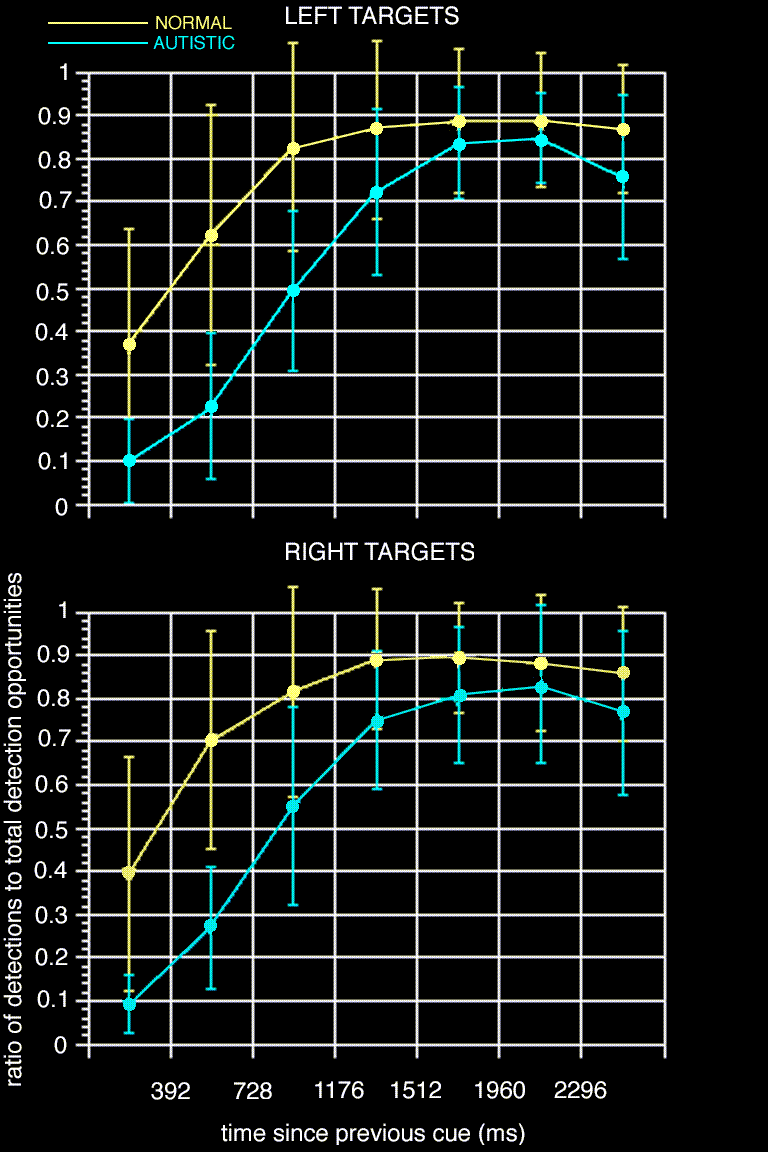

Although cognitive theories of autism such as theory-of-mind and weak central coherence explain a great deal of the most behaviourally significant abnormalities, they do not directly address all findings.
One such finding is a difficulty with rapid shifts of attention.
When people with autism are asked to discriminate a target in a newly attended location, relative to normal subjects they have trouble doing so within about two seconds of a cue to shift attention.
Here are the behavioural results from some of our earlier work. The vertical axis is the fraction of targets detected, and the horizontal axis is milliseconds since the most recent cue to shift attention. As you can see, people with autism, in blue, are differentially impaired at SOA's less than about two seconds.
![[previous]](../left_arrow.gif) |
![[contents]](../up_arrow.gif) |
![[next]](../right_arrow.gif) |